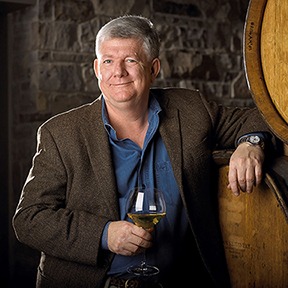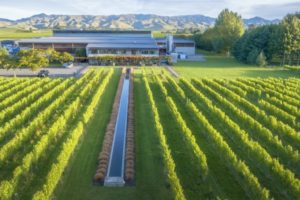“Ontario wine is too expensive.”
I’ve heard that refrain a lot. And I get it. Why buy Ontario wine when you can seemingly get something of equal quality for less money from, say, South Africa or Chile? Times are tough in these COVID times for LCBO-goers, after all, so frugal purchasing is the prudent course.
But at a time when Canadians are being encouraged to buy local, there’s more reason than ever to support winemakers in our own backyard.
And it might help to understand that it’s not a level playing field when it comes to producing wine around the world. From wages to insurance and land costs, it’s really expensive to make wine here in Ontario.
 Oh, and did we mention taxes? According to research from Potter Settlement Vineyards and Artisan Winery, in the best case scenario, taxes and fees comprise a whopping 73% of the price paid for a bottle of Ontario wine.
Oh, and did we mention taxes? According to research from Potter Settlement Vineyards and Artisan Winery, in the best case scenario, taxes and fees comprise a whopping 73% of the price paid for a bottle of Ontario wine.
When you crunch the numbers, some “75% of wineries in Ontario are losing money, and that was before the pandemic,” contends Southbrook Vineyards owner Bill Redelmeier.
Consider just one of the many manufacturing expenses. The minimum wage in South Africa is 20 Rand, or $1.67 in Canadian funds, compared to $14 here in Ontario. In Chile, the standard monthly minimum wage is 320,500 pesos—a mere $553 Cdn.
“I had a conversation about 15 years ago with a visiting Chilean winemaker, and he asked, ‘What are you guys paying your offshore Mexican labour?’” Redelmeier relates. “I said, ‘Ballpark, we pay them $100 US a day, and I have to supply them inspected accommodations.’ And he laughed. He said, ‘I pay my guys $100 a week, and if I like them, I let them pitch a tent in the vineyard.’ That’s one of the reasons why Ontario wine is more expensive.
“So then someone will ask, ‘What about Australia, where the social network and the cost of production is roughly the same?’” Redelmeier continues. “That’s true, but the average yield is about 14 tons per acre, and the average yield in Ontario is around five tons. Most of the production costs are based per acre, not per ton. So that’s another reason why this is an expensive place to make wine.”
EXPENSES ADD UP
At Tawse Winery in Vineland, “the metric is usually two to three tons per acre, and the cost of farming an acre is the same, regardless,” echoes the winery’s founder Moray Tawse. “And our grape costs are a lot higher, especially the grape varieties that do really well here.”
The added expense of producing organic and biodynamic wines, all add to the production costs for both Southbrook and Tawse.
“My cost of farming is around $10,000 an acre,” Tawse notes. “In Australia, they’re probably $3,000 an acre. A conventional farmer in Ontario is likely spending $4,000 to $4,200 an acre.”
Also contributing to the price of Ontario vino is the land underfoot. During an interview last year with Shiraz Mottiar, the head winemaker at Malivoire in Beamsville, Mottiar observed, “I was recently in Muscadet (western Loire Valley, on the central western coast of France), and our land prices in Ontario are at least five times more expensive than there—and that was an established vineyard! Even in Beaujolais it is less expensive.
“We’re not crazy expensive like the Okanagan, but we have a very small area to grow grapes here,” Mottiar explained. “For an established vineyard here, you’re looking at $50,000 to $75,000 an acre.”

Malivoire winemaker Shiraz Mottiar
And while the world may be experiencing climate change, it’s not as though Ontario winters can be avoided anytime soon. And that means other incurred expenses.
“When you’re in France and you see these 100-year-old Cabernet or Gamay vineyards—how am I ever going to do that in Ontario?” Mottiar asked rhetorically. “Currently, it’s around the 30-year mark where we have to replant a vineyard. So you only have 30 years before you have to reinvest all that again.
“Clean plant material is certainly getting more expensive every year, especially with some of the viruses that are popping up,” he added. “Also, were in an environment where one person cannot slowly manage this vineyard over the whole season. You need an influx of many people to get the job done quickly, because the vines are growing so fast.”
And there are also economies of scale, Mottiar observed. “If you get bigger, you can certainly cut your costs.”
BUYING LOCAL
But when it comes to supporting Ontario wineries, there’s buying local, and then there’s buying from the actual source.
“I use $20, the price of our rosé—not that we sell a lot at that price point—as an example,” Redelmeier explains. “If we sell a $20 bottle at the LCBO, we get $9.41. If we sell it at the winery, we get about $15. Now, if I sold the same bottle in Ohio for $19.95, I get to keep $19.92!”
Say what?

Southbrook Winery owner Bill Redelmeier
“If you buy a bottle of wine in Ohio, it’s $19.95 plus 6% sales tax, whereas in Ontario the tax built into the price,” Redelmeier notes. “It’s the only product in Ontario that has to be sold with tax included. But if I buy that same bottle in a restaurant, it’s ‘plus HST!’”
Southbrook also takes its own Made-in-Canada purchases very seriously. “The cheapest place in the world to buy bottles is China, but I refuse to buy them there,” Redelmeier says. “Nobody in China is buying my wine. So about 65% of the bottles we use come from a bottle plant in Brampton owned by Saxco—and 80% of their glass comes from the Bag it Back (Ontario Deposit Return) program.
“The cheapest place to buy capsules is also from China. But we are buying Stelvins (a popular screwcap closure system) from Quebec, which are 20% more expensive, but people in Quebec are buying my wine.”
THE VALUE OF ONTARIO WINE
Tawse, for his part, knows he can’t compete price-wise with many producers from around the globe. But he also knows Ontario has something many other nations don’t. “When I hear people say they like Chilean, Argentinian, Australian, California—those places are getting up to 15 tons of grapes per acre. And when you take places like Australia, where it’s very dry and there’s very little disease, it’s really cheap to grow the grapes there.
“People say, ‘I can get a cheaper wine that is bigger and juicier,’” Tawse shares. “But can they get a wine that has the subtleties of an Ontario wine, with the great minerality, stoniness and acidity that you just can’t get in most places around the world? When you talk to people who really love and study wine, those big full-bodied, high-alcohol wines are usually the first wines that they tire of, and they move to wines with more terroir, more elegance, more balance, more food-friendly.”
For example?

Tawse Winery founder Moray Tawse
“I honestly think Ontario is one of the greatest Cabernet Franc producers in the world,” Tawse says. “I think it’s a lot better than some Loire wines (in France). It has mid-palate balance and great acidity, and ripeness without the high alcohol content. And our Pinot will continue to get better and better here as the vines get older and the roots go deeper.”
That’s certainly been the case for Tawse’s award-winning Robyn’s Block Chardonnay, the vines of which were planted in 1982, and its Carly’s Block Riesling, first planted in 1978. “I think they’re some of the best wines we produce in Ontario,” Tawse says. “In 60-65% of blind tastings we do in Canada, the Ontario wines are guessed as French wines.”
Business is admittedly good for Tawse in Ontario. The success of online sales has been a revelation, and its sales at the LCBO are up year over year as well.
“There’s been a lot of talk about the LCBO not being supportive, but I find they’re really trying to be as supportive as ever,” Tawse says. “But if they are a store that sells mostly international wines, they can’t make their clients drink Ontario wines. Some people just say they won’t drink Ontario wines because of its old reputation. I think the LCBO is doing a good job of presenting Ontario wine and getting it out in front (in stores). But they are a store that sells international wines, and I don’t drink just Ontario wine by any means. The chairman has become a friend, and he is so worried about Ontario wineries and the Ontario industry that he has gone to bat with the government to make some supportive changes.”
PASSION PLAY
“When people say (Ontario wines are too expensive), I think what they’re usually trying to say is, ‘I much prefer to pay $15 than $25 for a bottle of wine that I can enjoy.’ And I get that,” says Tawse. “At our winery, we’re organic, we’re biodynamic, we have the best equipment we can get—we just got this optical sorting machine for our Pinot Noir that looks at every individual berry. As a general rule, I’m making wine for probably 3% of the wine-buying public.
“Some people drink wine because it’s pleasurable, because it goes with food,” Tawse continues. “Others drink it because they’re like a professor of the wine, who want to know where it came from, the growing conditions, the rain that vintage. When people come for tastings at our place, we try to explain all those things—we would really like to spend hours with them, because we want them to understand and have the passion that we have. I’m in the passion business; I’m not in the manufacturing business. So I’m looking for customers that are passionate about wine, not just wine drinkers.”
And our local wines are worthy of such excitement, Tawse maintains. “Many say Ontario wines need more acknowledgment around the world, but we need Ontario people to drink Ontario wine and understand how great they are.
“There were a lot of terrible wines in Ontario 40 years ago,” Tawse concedes. “But even from when I started in the business 20 years ago, the wines are so much better. I think our Meritage is fabulous. Ontario reds have elegance, and that’s not a word you use a lot in big red wines around the world—you hear power and flavour, but not the elegance and balance we have. Give Ontario wines a chance.”




4 Comments
Leave your reply.